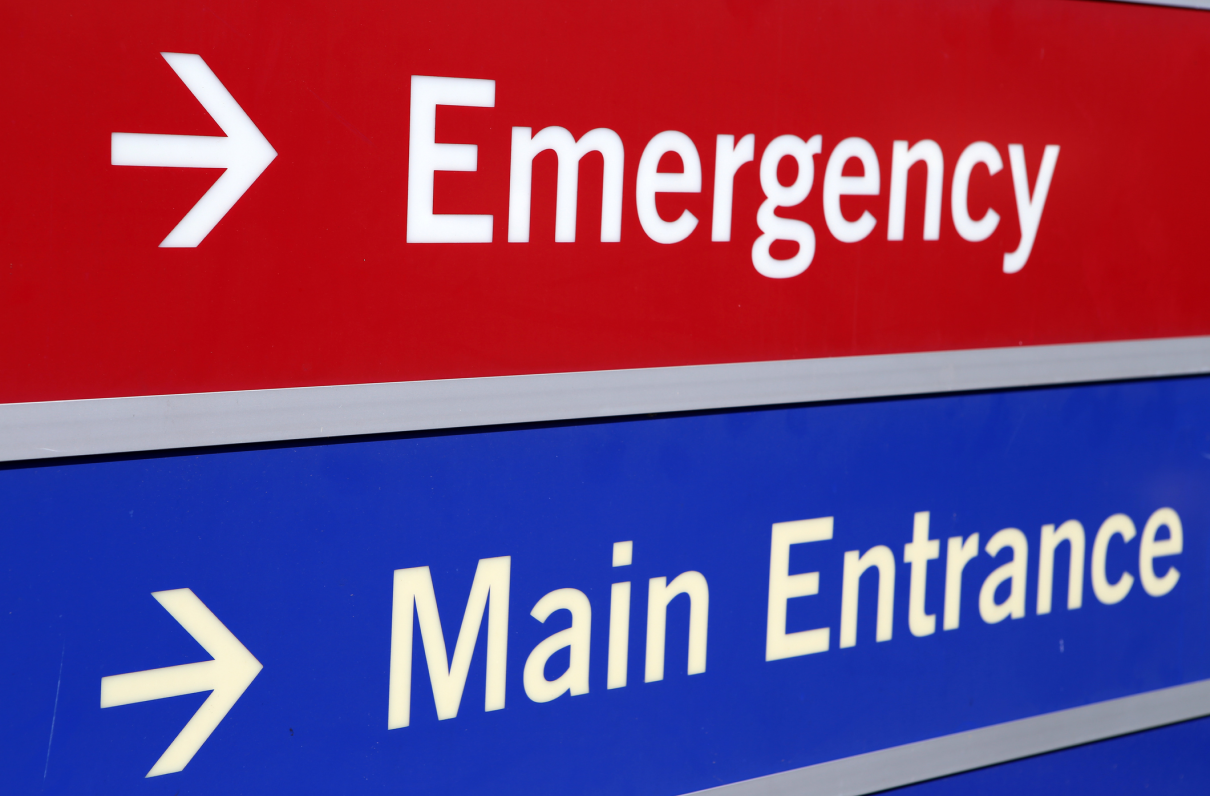Editor’s note: This article by Patricia Kime originally appeared on Military.com, a leading source of news for the military and veteran community.
Veterans can now access emergency care from a Department of Veterans Affairs hospital by telephone or video under a new program that links patients experiencing medical distress with a VA provider.
The VA announced Thursday that its tele-emergency care program, called tele-EC, is now available across the country, following a gradual rollout this year that has helped 61,182 veterans get care.
According to the VA, nearly 60% of callers who contacted the department through the program had their health needs solved at home without requiring a visit to urgent care or an emergency room.
"It might seem a little strange that we can treat a medical emergency through a telephone call. ... But we've all been there -- we have a cut and don't know if we need stitches. We may have fallen and don't know if we broke our wrist. ... For many of these concerns, simply talking to an emergency care provider can help determine if you need emergency care," said Dr. Neil Patel, VA National Emergency Medicine Office acting director, during a press conference in Washington, D.C., on Thursday.
[TAKE ACTION: Urge Your Elected Officials To Support Comprehensive VA Health Care]
The benefit works like this: Veterans enrolled in VA health care contact VA Health Connect, which links them with a triage nurse who, in turn, connects them to a VA emergency physician if needed.
The provider, who has access to a veteran's VA medical records, assesses the patient over the phone or by video and recommends treatment, follow-up or, in the case of a life-threatening emergency, calls 911 and stays on the line until emergency medical services arrive.
"Veterans can simply pick [up] the phone, call VA, and we can give them advice on what to do and where to go for care. ... Now, every veteran can feel like they have a doctor in the family," Patel said.
[RELATED: 5 VA Medical Facilities Will Restart Collection of Prescription Copayments]
From 2016 through 2022, 3.9 million veterans made nearly 20 million visits to an emergency room, with roughly 73% going to the VA and the remainder landing in a civilian emergency department, according to research published earlier this year in JAMA Network Open.
The study found that, from 2016 to 2022, the cost to the VA of visits by veterans to a civilian emergency room rose from $1.18 billion to $6.14 billion.
The program should reduce the VA's emergency medical budget and also lower wait times in VA facilities as more veterans learn about it and use it.
Patel said that, as an example, he handled a call from an 80-year-old veteran who was feeling lightheaded but lived more than an hour away from an emergency department. During the tele-EC call, Patel learned that the veteran had recently changed medications, with dizziness being a common side effect of the new regimen.
Patel was able to advise the veteran to drink fluids, change his dose, and take it at a different time to reduce side effects. Then, Patel followed up with the patient a few days later.
"He was feeling great and was so, so thankful that he didn't need to go to the ER and spend hours in a waiting room," Patel said.
[RELATED: VA to Research Link Between PFAS Chemicals and Kidney Cancer]
The program, now available in all 18 VA network regions, has been gradually introduced this year. With the emergency provider's access to VA medical records and the ability to prescribe medications and order lab tests and imaging, the program is able to provide "whole health" services to veterans that become integrated into their record and follow-on care.
"There are health care systems out there that are doing virtual care options. What we are doing at VA is, to my knowledge, unique in that we get to do it in an integrated health care system ... as opposed to treating the acute issue and hoping they get care later on," Patel said.
VA Secretary Denis McDonough said at the press conference that tele-EC will benefit veterans in rural areas, especially "extremely remote locales."
He added that he was meeting with Indian Health Service Director Roselyn Tso to discuss the new capability for Native American veterans.
"This is how we are thinking about this, not only as a geographic expansion, but also with a particular target of veterans ... in highly remote areas," McDonough added.
[RELATED: Watchdog: VA Crisis Line Switch to 3-Digit Number a Success]
To access tele-emergency care, veterans should reach out to VA Health Connect or the VA Health Chat app. Veterans also can find their local VA Health Connect number by searching for their facility.
Patel said if vets are experiencing a life-threatening emergency, they should call 911 or go to an "emergency room right away."
Get Help Navigating VA Benefits
Questions about VA benefits? Start here. PREMIUM and LIFE Members have direct access to our webinar archive with to-the-point information on everything from claims and appeals to concurrent receipt to home loans and more.
